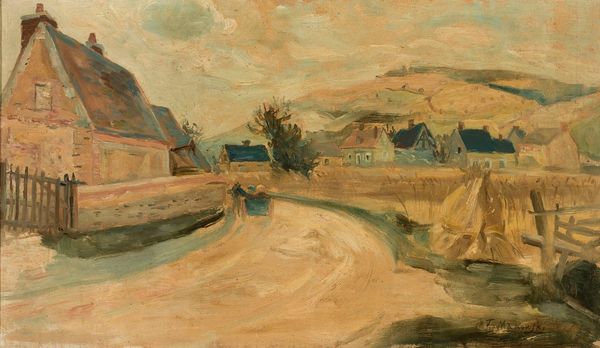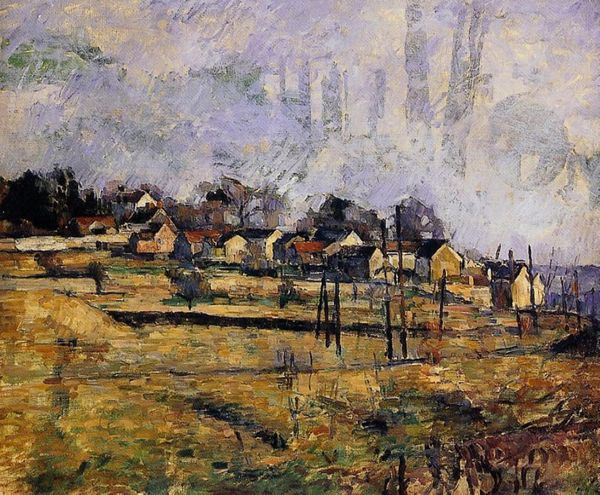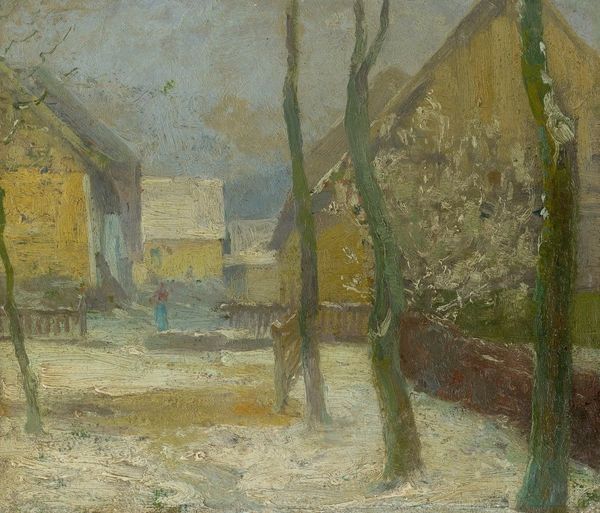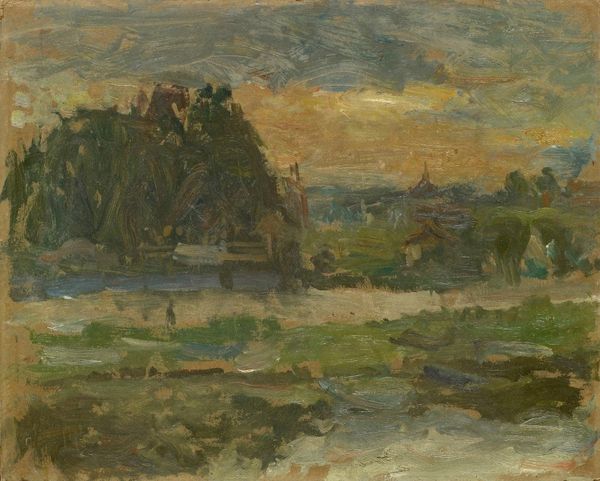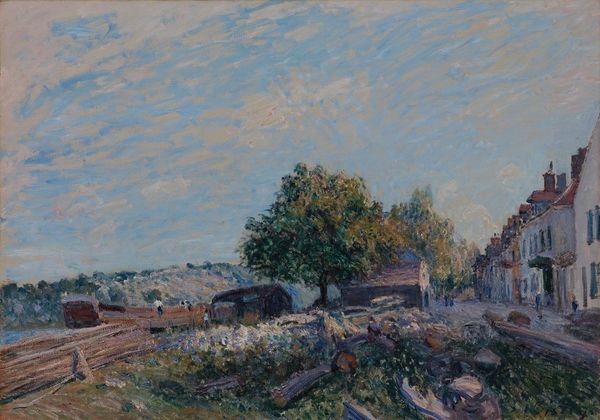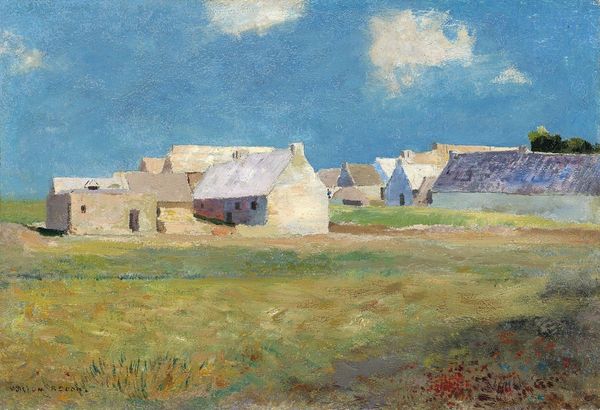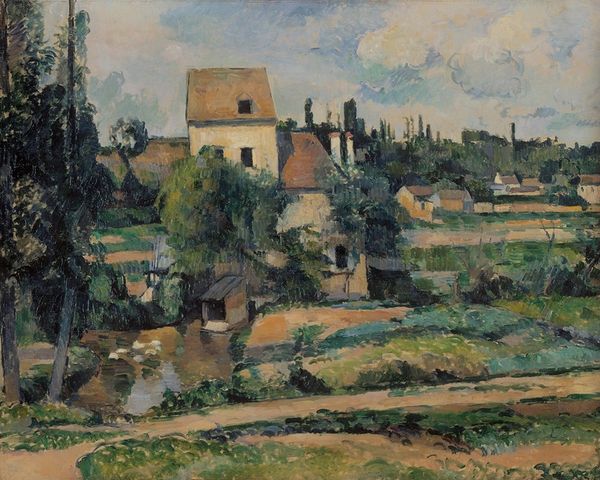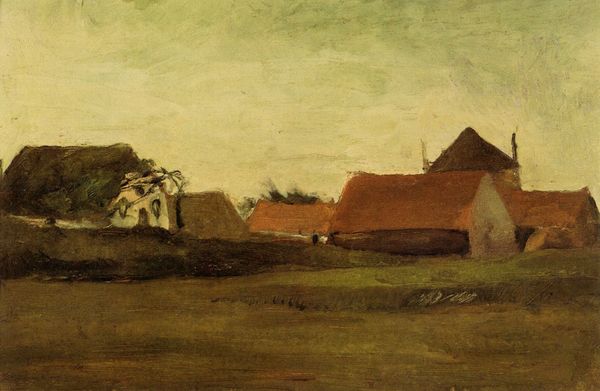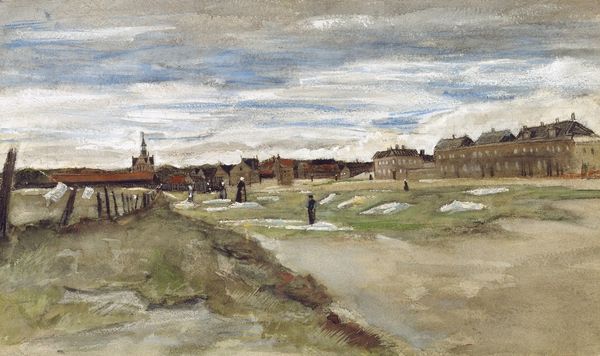
#
abstract painting
#
house
#
impressionist landscape
#
possibly oil pastel
#
oil painting
#
acrylic on canvas
#
street graffiti
#
underpainting
#
paint stroke
#
painting painterly
#
watercolor
#
building
Copyright: Public domain
Curator: Looking at Piet Mondrian’s “Schinkelbuurtje Sun,” painted in 1899 and currently housed in the Gemeentemuseum den Haag, one immediately sees a neighborhood scene rendered with muted earth tones. Editor: My first thought is: wow, that's muddy! In a charming way, though. It's like a memory, blurry around the edges. Is that... laundry hanging out to dry? There's something so ordinary and poignant about that little detail. Curator: Absolutely. And it's worth remembering that "ordinary" for one person might be entirely different for another. Mondrian painted this while the neighborhood, the Schinkelbuurt, was undergoing rapid urbanization, affecting the lives and livelihoods of many. His choice of subject matter highlights this period of transition. Editor: Oh, that context gives it a totally different weight! It's not just a pretty landscape; it's a document, almost a protest, even in its quietness. All those layered brushstrokes feel less like technical skill and more like…a sigh? Curator: Precisely. And examining Mondrian's brushwork reveals his engagement with Impressionism. These broken strokes of color, while subtle, create a sense of atmosphere and capture a fleeting moment in time, but through today's critical theory, one can’t ignore how this aesthetic movement, typically representing bourgeois values, collided with the lived experiences of a rapidly changing urban landscape. How the idea of fleeting beauty could underscore displacement. Editor: You're making me see it completely differently. The seemingly gentle impressionism actually highlights a societal shift. Makes me wonder what stories those buildings could tell... what struggles played out behind those windows? Curator: That is precisely the power of contextualising art – to push us beyond purely aesthetic appreciation to question the socio-political narratives inherent within the work. Editor: Makes you realize that art, even the seemingly simple stuff, is never just *there*. It's always part of something bigger. Curator: Exactly. Thank you, art, for making us think. Editor: To the ghosts of the Schinkelbuurt: We see you.
Comments
No comments
Be the first to comment and join the conversation on the ultimate creative platform.
